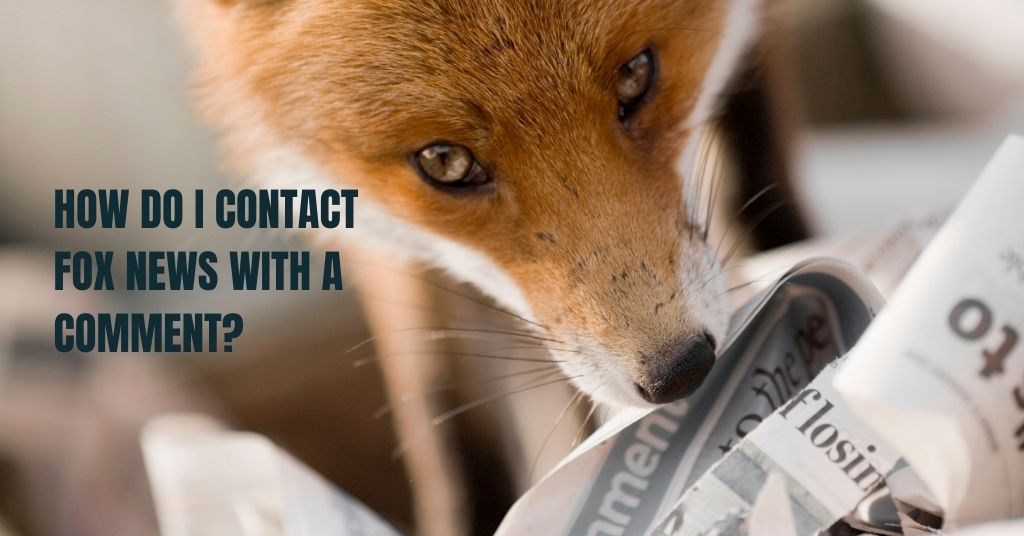When you consider the world of news anchors, it’s hard to ignore the growing trend of plastic surgery among prominent figures in the industry. This phenomenon raises questions about the pressures they face to maintain a certain image. For example, when you look at Robin Roberts and Megyn Kelly, their choices reveal much about the intersection of personal decisions and professional expectations. But what does this mean for the audience’s perception of authenticity in journalism? As you explore these transformations, you might start to wonder about the deeper implications behind these cosmetic enhancements.
The Pressure of Appearance
In the fast-paced world of news broadcasting, you can’t ignore the incredible pressure on anchors to maintain a polished appearance. Viewers often judge them based on looks, which can overshadow their journalistic skills. You might notice that an anchor’s on-screen persona must exude confidence and professionalism, which often translates into a flawless image.
Every day, you see anchors presenting news with a smile, but behind the scenes, the anxiety about their looks can be overwhelming. They frequently face scrutiny from the audience and media, making it crucial to stay ahead of trends in fashion, hair, and makeup. You may wonder how much time they dedicate to grooming, and it’s significant.
Moreover, the relentless comparison to younger, fresher faces can weigh heavily on them. This constant evaluation can lead some anchors to consider cosmetic procedures to maintain their competitive edge. Even the slightest imperfection can become a point of discussion, pushing them to strive for unattainable beauty standards.
Ultimately, this pressure for appearance not only affects their professional lives but also seeps into their personal well-being, influencing how they perceive themselves beyond the camera.
Famous Cases of Plastic Surgery
Among the myriad news anchors who’ve embraced plastic surgery, some cases stand out, sparking conversations about beauty standards in the industry. One prominent example is Robin Roberts, whose transformation after a life-threatening illness caught viewers’ attention. While she didn’t undergo extensive surgery, her subtle enhancements highlighted the pressures faced by women in the media.
You might also recall anchor Lara Spencer, known for her youthful appearance and radiant smile. Her decision to have a facelift and other procedures became a topic of discussion, as fans debated the impact of such changes on her image.
Then there’s the beloved Anderson Cooper; while he hasn’t openly admitted to any surgeries, many speculate about his youthful look, which leads to discussions on the pressures faced by male anchors.
Lastly, let’s not forget about Megyn Kelly, who underwent several cosmetic procedures that contributed to her polished on-screen presence.
Each of these cases reflects a broader trend among news anchors, where the pursuit of perceived perfection often intertwines with professional demands, making it vital to consider the implications of these choices in the world of journalism.

Motivations Behind the Procedures
The choices made by news anchors regarding plastic surgery often stem from a mix of personal and professional motivations. For many, the pressure to maintain a youthful appearance in front of the camera can be overwhelming. You might feel that looking your best is essential to connect with viewers and build credibility. This perception can drive you to consider procedures that enhance your appearance.
On a personal level, you may desire to boost your self-esteem or address insecurities that linger from your past. Plastic surgery can offer a pathway to regain confidence, allowing you to feel more comfortable in your skin.
Additionally, as you age, the natural changes in your body might prompt you to explore options that could help you feel aligned with your self-image.
Moreover, the competitive nature of the industry can further fuel these decisions. You may observe fellow anchors undergoing procedures and feel that you need to keep up to stay relevant.
Ultimately, the choice to undergo plastic surgery is deeply personal, influenced by both internal desires and external pressures. Understanding these motivations can provide insight into the complex world of news anchors and their choices regarding their appearances.
Impact on Career Trajectories
Many news anchors find that their decisions about plastic surgery can significantly influence their career trajectories. When you’re in the public eye, appearance often plays a crucial role in how you’re perceived professionally. If you choose to undergo procedures, you might feel more confident and presentable, which can translate into better on-screen performance. This boost in self-esteem can lead to more engaging presentations and higher viewer ratings.
On the flip side, some anchors face scrutiny or backlash for their choices, which can impact their job stability or future opportunities. If your audience perceives your surgery as an attempt to conform to industry standards, it might alienate viewers who prefer authenticity over polished appearances.
Ultimately, your decision can open doors or close them, depending on how it resonates with your audience and employers. You might find that careful consideration of the potential impact on your career is essential before making such personal choices.
Balancing your desire for self-improvement with the expectations of your role in the media landscape can shape your career path in unexpected ways.
Public Reactions and Criticism
Public reactions to news anchors who undergo plastic surgery can be mixed, often sparking intense debate. Some viewers express support, appreciating the anchors’ desire to enhance their appearance and feel more confident on screen. You might find that many see it as a personal choice, emphasizing the importance of self-care and mental well-being.
However, criticism is also prevalent. Many argue that such procedures perpetuate unrealistic beauty standards, particularly in a profession that influences public perception. You may notice discussions on social media where people voice concerns about the impact of these choices on younger audiences or the overall integrity of journalism. Some believe that prioritizing looks over substance undermines the credibility of news reporting.
Additionally, there’s a faction that views these transformations as an act of conformity, questioning whether anchors feel pressured to look a certain way to maintain their roles. This divide often leads to heated discussions about societal norms and expectations.
Ultimately, as you observe these reactions, it becomes clear that while some celebrate these changes, others critique them, reflecting broader conversations about beauty, aging, and authenticity in the media landscape.

Transformations Over the Years
Over the years, news anchors have undergone significant transformations, both in their appearance and the way they present themselves on screen. You might notice that many anchors have embraced cosmetic enhancements, such as facelifts, Botox, and lip fillers, aiming to maintain a youthful look. These changes often align with the evolving standards of beauty in the media industry, where polished appearances can impact audience perception.
As you watch these anchors over time, you’ll see how their presentation styles have shifted. They’ve adapted to more casual and relatable formats, moving away from the stiff, formal delivery of the past. This transformation is partly due to audience demand for authenticity and connection. You may find that today’s anchors engage with viewers in a more conversational tone, which can make their physical changes even more pronounced.
In this dynamic environment, it’s essential to recognize that these transformations aren’t solely about aesthetics. They reflect broader trends in media and society, where the balance between professionalism and personal branding is continuously evolving.
As you observe these changes, consider how they influence your perception of news and the anchors who deliver it.
The Role of Social Media
Social media plays a crucial role in shaping the public image of news anchors today, influencing their appearance and engagement with audiences. You might’ve noticed how anchors curate their online personas, showcasing their best looks and moments on platforms like Instagram and Twitter. This constant exposure means they often feel pressured to maintain a polished appearance, which sometimes leads to plastic surgery.
When you scroll through their feeds, you see not just news updates but also glimpses into their personal lives. This transparency can enhance relatability, but it also sets unrealistic expectations about beauty and age. As you engage with their posts, you might consider how social media impacts your perception of what’s acceptable or desirable in the news industry.
Moreover, the feedback loop is immediate. If an anchor shares a new look, you’ll likely see varied reactions from viewers, which can affect their future decisions regarding appearance.
In this environment, social media isn’t just a platform; it’s a powerful tool that shapes the standards and pressures news anchors face today, driving some to consider plastic surgery to fit into the mold they believe their audience desires.

Beauty Standards in Media
In recent years, beauty standards in media have shifted dramatically, often setting unattainable benchmarks for news anchors and public figures.
You’ve likely noticed how these standards seem to favor a narrow definition of beauty, often favoring youthful appearances, flawless skin, and specific body types. This focus can create pressure on individuals in the industry to conform, sometimes leading them to pursue cosmetic procedures to fit that ideal.
As a viewer, you might find yourself subconsciously influenced by these portrayals. When you see polished images of news anchors, it can distort your perception of what’s normal or attainable.
The emphasis on physical appearance can overshadow the anchors’ professional skills and intelligence, making it seem like looks are more important than substance.
Moreover, these rigid standards can lead to a cycle where the media reinforces unrealistic ideals, and public figures feel compelled to meet them.
It’s crucial to be aware of how these beauty norms shape your views and expectations. By questioning these ideals, you can foster a more inclusive understanding of beauty that celebrates diversity rather than conformity.
Personal Stories and Reflections
Many news anchors have shared personal stories that shed light on the pressures of conforming to beauty standards in the industry.
You’ve likely seen how these expectations can weigh heavily on their self-esteem and career choices. Anchors often feel the need to maintain a youthful appearance to remain competitive, and this pressure can lead to tough decisions about cosmetic procedures.
One anchor recalled her experience, saying she felt compelled to undergo surgery after receiving negative comments about her looks.
You might find it relatable that she struggled internally, knowing she wanted to be judged for her reporting skills rather than her appearance. Another anchor shared how she faced backlash for aging naturally, which made her question her worth in a profession that values youth.
These reflections reveal a common theme: the desire for authenticity clashes with the industry’s demands.
As you read these stories, consider how the quest for acceptance impacts not just news anchors, but anyone in the public eye.
Ultimately, you’re reminded that behind the polished exteriors, there are real people grappling with the same insecurities you might face in your own life.
Conclusion
In the competitive world of news anchoring, the pressure to maintain a certain appearance often leads to plastic surgery. While some anchors find confidence and a renewed sense of self through these procedures, it raises questions about authenticity and the impact of beauty standards on journalism. As the industry evolves, it’s essential to reflect on how these choices affect both the anchors’ careers and the audience’s perceptions, sparking ongoing conversations about the true essence of news reporting.


